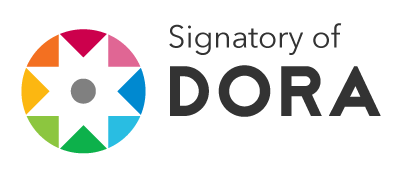Evaluate the teaching practice based on the comments of university students
DOI:
https://doi.org/10.35362/rie7623096Keywords:
teaching practice, teacher evaluation, teacher performance, studentsAbstract
The comments issued by students on the practice of their teachers in a public university are analyzed. The comments constitute information frequently used as part of the teacher evaluation, based on these judgments are made and are considered a qualitative element in the decision making by the administrative and management, however few studies address them. This paper analyzes the comments of 568 students from the six areas of knowledge, based on the Teacher Competency Evaluation Model, which includes three dimensions: forecasting, conducting and assessing the impact of the E-A process. The results indicate that 81% of the comments were classified in some dimension of the model; it is highlighted how they consider their professors to be able to teach, solve problems in class, develop activities that promote learning; while, punctuality, time organization, attendance, and above all the way of assessing the teaching-learning process are valued negatively. The usefulness of the interpretation of the comments as qualitative information in the teacher evaluation system is highlighted, not only when confirming elements evaluated by the quantitative instrument such as the student opinion questionnaires but also evidencing aspects not contemplated by it.
Downloads
References
Benton, S. y Cashin, W. (2014). Capítulo 7, Student ratings of instruction in college and university courses. En M. Paulsen (Eds.) Higher Education: Handbook of Theory and Research Vol. 29 (279-326). Springer: EE.UU.
Brockx, Van Roy y Mortelmans (2012). The Student as a Commentator: Students’ Comments in Student Evaluations of Teaching. Procedia - Social and Behavioral Sciences. 69. 1122-1133. doi:10.1016/j.sbspro.2012.12.042
Cairus, D., Reyes, E., y Quinde, J. (2014). Características docentes percibidas como positivas por estudiantes universitarios. IV Congreso Internacional Nuevas Tendencias en la Formación Permanente del Profesorado. Universidad Adventista del Plata Universidad Adventista del Plata (UAP) en Buenos Aires, Argentina.
Calatayud, M. (2014). Evaluación de la práctica docente y calidad educativa: una relación encadenada. Revista Iberoamericana de Educación, 65(1), 1-12. Recuperado de https://rieoei.org/RIE/article/view/331
García, J. y Medécigo, A. (2014). Los criterios que emplean los estudiantes universitarios para evaluar la in-eficacia docente de sus profesores. Perfiles educativos, 36(143), 124-139.
García-Cabrero, B., Loredo, J., Luna, E., y Rueda, M. (2012). Competencias docentes en educación media y superior, desarrollo y validación de un modelo de evaluación. UABC, Juan Pablos Editor: México.
Garza-Quiñones, R. (2013). La evaluación docente desde la perspectiva de los alumnos. Ponencia presentada en el 1er. Congreso Internacional Virtual de Investigación en Educación Superior Online, Tijuana B.C., México. Recuperado de http://www.comie.org.mx/congreso/memoriaelectronica/v11/docs/area_13/2423.pdf
Gómez, S. y Medina, S. (2015). Aspectos distintivos y semejantes en poblaciones estudiantiles universitarias de diferentes carreras. Primeras referencias sociodemográficas. Educación. 24(47), 115-133. Recuperado de http://revistas.pucp.edu.pe/index.php/educacion/article/view/14248/14867
González, J. y Subaldo, L. (2015). Opiniones sobre el desempeño docente y sus repercusiones en la satisfacción profesional y personal de los profesores. Educación. (24) 47. Recuperado de http://revistas.pucp.edu.pe/index.php/educacion/article/view/14247/14865
Lewis, K. (2001). Making Sense of Student Written Comments. New Directions for Teaching and Learning. 87, 25–32.
Linse, A. (2017). Interpreting and using student ratings data: Guidance for faculty serving as administrators and on evaluation committees. Studies in Educational Evaluation 54, 94–106. Recuperado de https://doi.org/10.1016/j.stueduc.2016.12.004
Luna, E. y Reyes, E. (2015). Validación de constructo de un Cuestionario de Evaluación de la Competencia Docente. Revista Electrónica de Investigación Educativa, 17, 13-27. http://www.redalyc.org/pdf/155/15540997002.pdf
Rueda, M., Luna, E., García, B. y Loredo, J. (2010). La evaluación de la docencia en las universidades públicas mexicanas: un diagnóstico para su comprensión y mejora. Revista Iberoamericana de Evaluación Educativa. 3(1e), 77-92. Recuperado de https://revistas.uam.es/index.php/riee/article/view/4506
Scriven, M. (1995). Student ratings offer useful input to teacher evaluations. Practical Assessment, Research & Evaluation, 4(7). Recuperado de http://pareonline.net/getvn.asp?v=4&n=7
Spooren, P., Brockx, B. y Mortelmans, D. (2013). On the Validity of Student Evaluation of Teaching. Review of Educational Research. 83(4), 598 – 642. doi 10.3102/0034654313496870
Theall, M. y Franklin, J. (2001). Looking for Bias in All the Wrong Places: A Search for Truth or a Witch Hunt in Student Ratings of Instruction? New Directions For Institutional Research, 109, (45-56).
Zimmaro, D., Gaede, C., Heikes, E., Shim, M. y Lewis, K. (2006). A study of students’ written course evaluation comments at a public university. Austin: University of Texas, Recuperado de https://testingservices.utexas.edu/sites/default/files/A-Study-of-Students-Written-Course-Evaluation-Comments-at-a-Public-University-2006.pd
How to Cite
Downloads
Published
Issue
Section
License
Any authors who publish with this journal accept the following terms:















